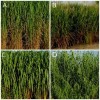 Nonnative invasive plant species pose a significant threat to Florida’s natural areas. The UF/IFAS Assessment of Nonnative Plants in Florida’s Natural Areas (hereafter, UF/IFAS Assessment) uses literature-based risk assessment tools to predict the invasion risk of both nonnative species that occur in the state as well as species proposed for introduction. The UF/IFAS Assessment team has evaluated more than 770 species, including 97 species proposed for introduction or new uses. The team is actively identifying and evaluating potentially problematic nonnative species (and sub-specific or hybrid taxa). Recommendations and supporting information from the UF/IFAS Assessment can be found at http://plants.ifas.ufl.edu/assessment. This 6-page fact sheet was written by Deah Lieurance, S. Luke Flory, Aimee L. Cooper, Doria R. Gordon, Alison M. Fox, Joan Dusky, and Linda Tyson, and published by the UF Department of Agronomy, November 2013.
Nonnative invasive plant species pose a significant threat to Florida’s natural areas. The UF/IFAS Assessment of Nonnative Plants in Florida’s Natural Areas (hereafter, UF/IFAS Assessment) uses literature-based risk assessment tools to predict the invasion risk of both nonnative species that occur in the state as well as species proposed for introduction. The UF/IFAS Assessment team has evaluated more than 770 species, including 97 species proposed for introduction or new uses. The team is actively identifying and evaluating potentially problematic nonnative species (and sub-specific or hybrid taxa). Recommendations and supporting information from the UF/IFAS Assessment can be found at http://plants.ifas.ufl.edu/assessment. This 6-page fact sheet was written by Deah Lieurance, S. Luke Flory, Aimee L. Cooper, Doria R. Gordon, Alison M. Fox, Joan Dusky, and Linda Tyson, and published by the UF Department of Agronomy, November 2013.
http://edis.ifas.ufl.edu/ag376
Tag: Agronomy Department
Management Considerations for Wheat Production in Florida
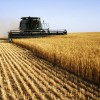 Higher wheat prices created the impetus for growing wheat in the southeastern United States. Since increasing amounts of corn have been diverted to ethanol production, there is a shortage of grain for America’s livestock industry. This shortage results in higher wheat and soybean prices. Wheat and soybean have been grown together as a double crop throughout the Southeast for many years, which generally increases profitability compared with growing only one of the crops. Planting wheat followed by cotton, peanut or grain sorghum has also become a common practice. The best management practices for high yields of wheat in the Southeast Coastal Plain are well established. This 3-page fact sheet lists production practices for small grains in Florida. Written by D.L. Wright, A.R. Blount, R.D. Barnett, C.L. Mackowiak, N. Dufault, and J. Marois, and published by the UF Department of Agronomy, October 2013.
Higher wheat prices created the impetus for growing wheat in the southeastern United States. Since increasing amounts of corn have been diverted to ethanol production, there is a shortage of grain for America’s livestock industry. This shortage results in higher wheat and soybean prices. Wheat and soybean have been grown together as a double crop throughout the Southeast for many years, which generally increases profitability compared with growing only one of the crops. Planting wheat followed by cotton, peanut or grain sorghum has also become a common practice. The best management practices for high yields of wheat in the Southeast Coastal Plain are well established. This 3-page fact sheet lists production practices for small grains in Florida. Written by D.L. Wright, A.R. Blount, R.D. Barnett, C.L. Mackowiak, N. Dufault, and J. Marois, and published by the UF Department of Agronomy, October 2013.
http://edis.ifas.ufl.edu/ag293
Identification and Control of Coral Ardisia (Ardisia crenata): A Potentially Poisonous Plant.
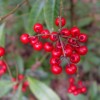 Coral ardisia, also known as coral berry, spice berry, and scratchthroat, was introduced to Florida in the early 1900’s for ornamental purposes. Since then, it has escaped cultivation, and it is found in hardwood hammocks and other moist, natural-wooded areas and grazing lands. Although there is no published literature supporting the theory that coral ardisia is toxic, it is suspected that the berries and/or foliage are poisonous to livestock, pets, and humans. This 3-page fact sheet was written by B. A. Sellers, Sarah Lancaster, K. A. Langeland, J.A. Ferrell, Michael Meisenberg, and J. Walter, and published by the UF Department of Agronomy, November 2013.
Coral ardisia, also known as coral berry, spice berry, and scratchthroat, was introduced to Florida in the early 1900’s for ornamental purposes. Since then, it has escaped cultivation, and it is found in hardwood hammocks and other moist, natural-wooded areas and grazing lands. Although there is no published literature supporting the theory that coral ardisia is toxic, it is suspected that the berries and/or foliage are poisonous to livestock, pets, and humans. This 3-page fact sheet was written by B. A. Sellers, Sarah Lancaster, K. A. Langeland, J.A. Ferrell, Michael Meisenberg, and J. Walter, and published by the UF Department of Agronomy, November 2013.
http://edis.ifas.ufl.edu/ag281
2013 Cotton Defoliation and Harvest Aid Guide
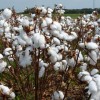 In Florida, cotton requires about 155 days of growth from planting to harvest. Throughout the growing season, growers must make important management decisions about defoliation, boll opening, and regrowth suppression. These factors can affect the quality and storage time if the crop is put into modules. The greatest losses in quality are caused by stain from poorly defoliated plants or regrowth and moisture from green tissue. This 8-page fact sheet was written by R.G. Leon, D. L. Wright and B. J. Brecke, and published by the UF Department of Agronomy, October 2013.
In Florida, cotton requires about 155 days of growth from planting to harvest. Throughout the growing season, growers must make important management decisions about defoliation, boll opening, and regrowth suppression. These factors can affect the quality and storage time if the crop is put into modules. The greatest losses in quality are caused by stain from poorly defoliated plants or regrowth and moisture from green tissue. This 8-page fact sheet was written by R.G. Leon, D. L. Wright and B. J. Brecke, and published by the UF Department of Agronomy, October 2013.
http://edis.ifas.ufl.edu/ag188
Florida Crop/Pest Management Profile: Watermelon
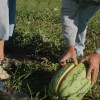 Florida is the only U.S. supplier of watermelons from December to April. Florida watermelons are harvested throughout the year, although the vast majority of production is harvested from May to July. This 26-page fact sheet profiles Florida watermelon crop production and pest management practices. Written by Wael M. Elwakil and Mark A. Mossler, and published by the UF Department of Agronomy, August 2013.
Florida is the only U.S. supplier of watermelons from December to April. Florida watermelons are harvested throughout the year, although the vast majority of production is harvested from May to July. This 26-page fact sheet profiles Florida watermelon crop production and pest management practices. Written by Wael M. Elwakil and Mark A. Mossler, and published by the UF Department of Agronomy, August 2013.
http://edis.ifas.ufl.edu/pi031
Wildland Weeds: Paragrass, Urochloa mutica (SSAGR370/AG375)
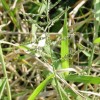 Paragrass (also referred to as Californiagrass) is thought to have been introduced into Florida sometime in the late 1870s as a forage plant. The semiaquatic grass is a native of tropical Africa, and today it is established in both hemispheres in tropical and subtropical regions as a highly palatable fodder. The grass is established in regions of poorly drained soils and along freshwater shorelines in Alabama, Florida, Hawaii, Maryland, Oregon, South Carolina, and Texas. It is an extremely aggressive competitor that can displace many shoreline emergent plants and plants in cultivated or disturbed sites associated with moist soil. Paragrass becomes readily established in wet soils along shorelines where it can form large monocultures. This 4-page fact sheet was written by L. T. Markle, B. A. Sellers, and W. A. Overholt, and published by the UF Department of Agronomy, April 2013.
Paragrass (also referred to as Californiagrass) is thought to have been introduced into Florida sometime in the late 1870s as a forage plant. The semiaquatic grass is a native of tropical Africa, and today it is established in both hemispheres in tropical and subtropical regions as a highly palatable fodder. The grass is established in regions of poorly drained soils and along freshwater shorelines in Alabama, Florida, Hawaii, Maryland, Oregon, South Carolina, and Texas. It is an extremely aggressive competitor that can displace many shoreline emergent plants and plants in cultivated or disturbed sites associated with moist soil. Paragrass becomes readily established in wet soils along shorelines where it can form large monocultures. This 4-page fact sheet was written by L. T. Markle, B. A. Sellers, and W. A. Overholt, and published by the UF Department of Agronomy, April 2013.
http://edis.ifas.ufl.edu/ag375
Water Quality and the Effectiveness of Pesticides (PI245)
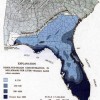 Pesticide applicators do not usually blame the mix for a pest control failure. Rather, the applicator will check if the correct pesticide was chosen for the job, if the pest was misidentified, if application equipment was properly calibrated, or if there was pesticide resistance. However, pesticide applicators should be aware that water quality can play a role in the efficacy of a pesticide treatment. Some pesticides lose their effectiveness when mixed with water that contains suspended or dissolved solids. This publication discusses how water quality affects pesticide mixes. This 2-page fact sheet was written by F. M. Fishel, and published by the UF Department of Agronomy, April 2013.
Pesticide applicators do not usually blame the mix for a pest control failure. Rather, the applicator will check if the correct pesticide was chosen for the job, if the pest was misidentified, if application equipment was properly calibrated, or if there was pesticide resistance. However, pesticide applicators should be aware that water quality can play a role in the efficacy of a pesticide treatment. Some pesticides lose their effectiveness when mixed with water that contains suspended or dissolved solids. This publication discusses how water quality affects pesticide mixes. This 2-page fact sheet was written by F. M. Fishel, and published by the UF Department of Agronomy, April 2013.
http://edis.ifas.ufl.edu/pi245
The EPA Conventional Reduced Risk Pesticide Program (PI224)
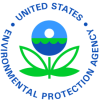 The Food Quality Protection Act (FQPA) of 1996 initiated the U.S. Environmental Protection Agency’s (EPA) Conventional Reduced Risk Pesticide Program. Its purpose is to expedite the review and registration process of conventional pesticides that pose less risk to human health and the environment than existing conventional alternatives. Riskier conventional alternatives are those pesticides EPA deems as having neurotoxic, carcinogenic, reproductive, and developmental toxicity, or groundwater contamination effects. It serves as a means to ensure that reduced risk pesticides enter the channels of trade and are available to growers as soon as possible. This 11-page fact sheet was written by F.M. Fishel, and published by the UF Department of Agronomy, April 2013.
The Food Quality Protection Act (FQPA) of 1996 initiated the U.S. Environmental Protection Agency’s (EPA) Conventional Reduced Risk Pesticide Program. Its purpose is to expedite the review and registration process of conventional pesticides that pose less risk to human health and the environment than existing conventional alternatives. Riskier conventional alternatives are those pesticides EPA deems as having neurotoxic, carcinogenic, reproductive, and developmental toxicity, or groundwater contamination effects. It serves as a means to ensure that reduced risk pesticides enter the channels of trade and are available to growers as soon as possible. This 11-page fact sheet was written by F.M. Fishel, and published by the UF Department of Agronomy, April 2013.
http://edis.ifas.ufl.edu/pi224
Florida Crop/Pest Management Profile: Cabbage (CIR1256/PI042)
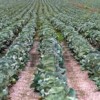 Florida’s cabbage production is exclusively for the fresh market. The higher-quality cabbage obtained during the late fall, winter, and early spring months in Florida allows the shipment of fresh cabbage to areas of the United States that cannot produce cabbage during that part of the year. This 18-page fact sheet summarizes production practices and pest management for cabbage production in Florida. Written by Wael M. Elwakil and Mark Mossler, and published by the UF Department of Agronomy, April 2013.
Florida’s cabbage production is exclusively for the fresh market. The higher-quality cabbage obtained during the late fall, winter, and early spring months in Florida allows the shipment of fresh cabbage to areas of the United States that cannot produce cabbage during that part of the year. This 18-page fact sheet summarizes production practices and pest management for cabbage production in Florida. Written by Wael M. Elwakil and Mark Mossler, and published by the UF Department of Agronomy, April 2013.
http://edis.ifas.ufl.edu/pi042
Is Our Food Safe from Pesticides? (PI230)
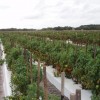 Growers of the food supply have adopted the use of integrated pest management (IPM) because it is no longer possible to rely solely on chemical pesticides to prevent unacceptable crop losses. According to the U.S. Environmental Protection Agency (EPA), IPM is the coordinated use of pest and environmental information and available pest control methods to prevent unacceptable levels of damage by the most economical means with the least possible hazard to people, property, and the environment. Scientific IPM strategies give the grower economic incentives for sustaining long-term crop protection with minimal disruption to the environment. The agricultural community typically will use pesticides sparingly as part of the IPM strategy whenever proven alternatives are not available for pest control. This 4-page fact sheet was written by Frederick M. Fishel, and published by the UF Department of Agronomy, March 2013.
Growers of the food supply have adopted the use of integrated pest management (IPM) because it is no longer possible to rely solely on chemical pesticides to prevent unacceptable crop losses. According to the U.S. Environmental Protection Agency (EPA), IPM is the coordinated use of pest and environmental information and available pest control methods to prevent unacceptable levels of damage by the most economical means with the least possible hazard to people, property, and the environment. Scientific IPM strategies give the grower economic incentives for sustaining long-term crop protection with minimal disruption to the environment. The agricultural community typically will use pesticides sparingly as part of the IPM strategy whenever proven alternatives are not available for pest control. This 4-page fact sheet was written by Frederick M. Fishel, and published by the UF Department of Agronomy, March 2013.
http://edis.ifas.ufl.edu/pi230
EPA’s Endocrine Disruptor Screening Program (EDSP) (PI227)
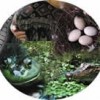 People have asked questions in recent years concerning the effects that certain chemicals may have on the endocrine system of humans and wildlife. Laboratory studies have produced evidence that show various chemicals disrupt the endocrine systems of animals. Other evidence has shown that the endocrine systems of certain fish and wildlife species have been affected by chemical contaminants. Do some of these same chemical contaminants also affect the human endocrine system? Do pesticides cause these effects? The relationship between human diseases of the endocrine system and exposure to environmental contaminants is poorly understood and controversial. This 2-page fact sheet discusses the U.S. Environmental Protection Agency’s (EPA) screening program for potential effects to the endocrine system caused by pesticide exposure. Written by F.M. Fishel, and published by the UF Department of Agronomy, March 2013.
People have asked questions in recent years concerning the effects that certain chemicals may have on the endocrine system of humans and wildlife. Laboratory studies have produced evidence that show various chemicals disrupt the endocrine systems of animals. Other evidence has shown that the endocrine systems of certain fish and wildlife species have been affected by chemical contaminants. Do some of these same chemical contaminants also affect the human endocrine system? Do pesticides cause these effects? The relationship between human diseases of the endocrine system and exposure to environmental contaminants is poorly understood and controversial. This 2-page fact sheet discusses the U.S. Environmental Protection Agency’s (EPA) screening program for potential effects to the endocrine system caused by pesticide exposure. Written by F.M. Fishel, and published by the UF Department of Agronomy, March 2013.
http://edis.ifas.ufl.edu/pi227
Children and Pesticides (PI226)
 Children act fast, but so do poisons, including pesticides. Fortunately for most parents, their children are not harmed when the parents have a momentary lapse and aren’t supervising them for a short time. But how would parents respond if they suddenly turn around, and their toddler is holding a can of household aerosol insect killer? This 3-page fact sheet outlines some facts and precautionary measures regarding children and pesticides in the home environment, so parents have a better idea of how to keep harmful chemical products away from their children. Written by F.M. Fishel, and published by the UF Department of Agronomy, March 2013.
Children act fast, but so do poisons, including pesticides. Fortunately for most parents, their children are not harmed when the parents have a momentary lapse and aren’t supervising them for a short time. But how would parents respond if they suddenly turn around, and their toddler is holding a can of household aerosol insect killer? This 3-page fact sheet outlines some facts and precautionary measures regarding children and pesticides in the home environment, so parents have a better idea of how to keep harmful chemical products away from their children. Written by F.M. Fishel, and published by the UF Department of Agronomy, March 2013.
http://edis.ifas.ufl.edu/pi226
Natural Area Weeds: Old World Climbing Fern (Lygodium microphyllum) (SSAGR21/AG122)
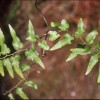 Native to Africa, Asia, and Australia, Old World climbing fern (OWCF) is a newcomer to Florida that has spread at an alarming rate since its introduction. The Florida Exotic Pest Plant Council considers Old World climbing fern to be invasive. It’s also regulated by laws of the Florida Department of Agriculture and Consumer Services (FDACS) as a Florida Noxious Weed and by the United States Department of Agriculture (USDA) as a Federal Noxious Weed. It may be the most serious threat to Florida’s natural areas. This 6-page fact sheet was written by Kenneth A. Langeland and Jeffery Hutchinson, and published by the UF Department of Agronomy, February 2013.
Native to Africa, Asia, and Australia, Old World climbing fern (OWCF) is a newcomer to Florida that has spread at an alarming rate since its introduction. The Florida Exotic Pest Plant Council considers Old World climbing fern to be invasive. It’s also regulated by laws of the Florida Department of Agriculture and Consumer Services (FDACS) as a Florida Noxious Weed and by the United States Department of Agriculture (USDA) as a Federal Noxious Weed. It may be the most serious threat to Florida’s natural areas. This 6-page fact sheet was written by Kenneth A. Langeland and Jeffery Hutchinson, and published by the UF Department of Agronomy, February 2013.
http://edis.ifas.ufl.edu/ag122
Natural Area Weeds: Skunkvine (Paederia foetida) (SSAGR80/WG208)
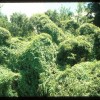 Native to eastern and southern Asia, skunkvine is an invasive plant species introduced to the USDA Field Station near Brooksville before 1897. It has been included on the Florida Exotic Pest Plant Council List of Invasive Species as a Category I, defined as “species that are invading and disrupting native plant communities in Florida.” It was added to the Florida Noxious Weed List in 1999, making it illegal to possess, move, or release in Florida. This 3-page fact sheet was written by K. A. Langeland, R. K. Stocker, and D. M. Brazis, and published by the UF Department of Agronomy, February 2013.
Native to eastern and southern Asia, skunkvine is an invasive plant species introduced to the USDA Field Station near Brooksville before 1897. It has been included on the Florida Exotic Pest Plant Council List of Invasive Species as a Category I, defined as “species that are invading and disrupting native plant communities in Florida.” It was added to the Florida Noxious Weed List in 1999, making it illegal to possess, move, or release in Florida. This 3-page fact sheet was written by K. A. Langeland, R. K. Stocker, and D. M. Brazis, and published by the UF Department of Agronomy, February 2013.
http://edis.ifas.ufl.edu/wg208
Diagnosing Herbicide Injury in Corn (SSAGR365/AG374)
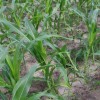 This 9-page fact sheet lists nine modes of action: the mechanism of action, behavior in plants, symptoms and herbicides, and illustrations. Written by Sarah Berger, Jason Ferrell, and Peter Dittmar, and published by the UF Department of Agronomy, January 2013.
This 9-page fact sheet lists nine modes of action: the mechanism of action, behavior in plants, symptoms and herbicides, and illustrations. Written by Sarah Berger, Jason Ferrell, and Peter Dittmar, and published by the UF Department of Agronomy, January 2013.
http://edis.ifas.ufl.edu/ag374
Biology and Control of Sorghum-almum in Sugarcane (SSAGR369/SC098)
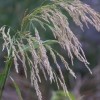 Sorghum-almum is a weak, perennial rhizomatous grass. Leaves of seedlings are rolled in a bud with a fringed membranous ligule. Seedlings often resemble corn seedlings when small. Stems of mature plants are stout and erect, reaching up to 14 feet tall. Leaf blades are flat and sandpapery. Sorghum-almum is commonly found in the southern part of Florida in sugarcane fields and along ditches, canals, and roadsides. This 3-page fact sheet was written by Dennis Calvin Odero, Ron Rice, and Les Baucum , and published by the UF Department of Agronomy, January 2013.
Sorghum-almum is a weak, perennial rhizomatous grass. Leaves of seedlings are rolled in a bud with a fringed membranous ligule. Seedlings often resemble corn seedlings when small. Stems of mature plants are stout and erect, reaching up to 14 feet tall. Leaf blades are flat and sandpapery. Sorghum-almum is commonly found in the southern part of Florida in sugarcane fields and along ditches, canals, and roadsides. This 3-page fact sheet was written by Dennis Calvin Odero, Ron Rice, and Les Baucum , and published by the UF Department of Agronomy, January 2013.
http://edis.ifas.ufl.edu/sc098
Biology and Control of Horse Purslane and Common Purslane in Sugarcane (SSAGR368/SC097)
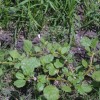 Horse purslane and common purslane are broadleaf weeds associated with sugarcane fields in muck (organic) and mineral soils of South Florida. Growers often confuse these two weed species with each other. However, these two species have distinct phylogenetic (evolutionary) and morphological differences. This 4-page fact sheet was written by Dennis Calvin Odero, Ron Rice, and Les Baucum, and published by the UF Department of Agronomy, January 2013.
Horse purslane and common purslane are broadleaf weeds associated with sugarcane fields in muck (organic) and mineral soils of South Florida. Growers often confuse these two weed species with each other. However, these two species have distinct phylogenetic (evolutionary) and morphological differences. This 4-page fact sheet was written by Dennis Calvin Odero, Ron Rice, and Les Baucum, and published by the UF Department of Agronomy, January 2013.
http://edis.ifas.ufl.edu/sc097
Biology and Control of Goosegrass in Sugarcane (SSAGR367/SC096)
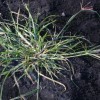 Goosegrass is an annual plant that produces a prostrate, mat-like rosette with flattened stems radiating from a central point. It is often described as looking like someone has stepped in the middle of the plant, flattening it out. Because of the whitish to translucent color of the leaf sheath margins, goosegrass usually appears white to silver; this is why it is known as white or silver crabgrass. Goosegrass is found year-round in southern Florida and is commonly associated with newly planted and stubble (ratoon) sugarcane fields. This 3-page fact sheet was written by Dennis Calvin Odero, Ron Rice, and Les Baucum, and published by the UF Department of Agronomy, January 2013.
Goosegrass is an annual plant that produces a prostrate, mat-like rosette with flattened stems radiating from a central point. It is often described as looking like someone has stepped in the middle of the plant, flattening it out. Because of the whitish to translucent color of the leaf sheath margins, goosegrass usually appears white to silver; this is why it is known as white or silver crabgrass. Goosegrass is found year-round in southern Florida and is commonly associated with newly planted and stubble (ratoon) sugarcane fields. This 3-page fact sheet was written by Dennis Calvin Odero, Ron Rice, and Les Baucum, and published by the UF Department of Agronomy, January 2013.
http://edis.ifas.ufl.edu/sc096
Biology and Control of Coast Cockspur in Sugarcane (SSAGR366/SC095)
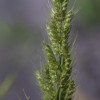 Coast cockspur is a relative of barnyardgrass that is native to North America. In South Florida, coast cockspur typically begins to infest sugarcane during the onset of rainfall in late spring. This 2-page fact sheet was written by Dennis Calvin Odero, Ron Rice, and Les Baucum, and published by the UF Department of Agronomy, January 2013.
Coast cockspur is a relative of barnyardgrass that is native to North America. In South Florida, coast cockspur typically begins to infest sugarcane during the onset of rainfall in late spring. This 2-page fact sheet was written by Dennis Calvin Odero, Ron Rice, and Les Baucum, and published by the UF Department of Agronomy, January 2013.
http://edis.ifas.ufl.edu/sc095
Guia de seguridad para el uso de pesticidas en el hogar (PI244)
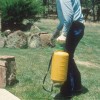 En este documento se describen las medidas que ayudarán en la toma de decisiones inteligentes y seguras sobre la utilización de plaguicidas en el hogar y césped/jardín. This 4-page fact sheet was written by Frederick M. Fishel, and published by the UF Department of Agronomy, December 2012.
En este documento se describen las medidas que ayudarán en la toma de decisiones inteligentes y seguras sobre la utilización de plaguicidas en el hogar y césped/jardín. This 4-page fact sheet was written by Frederick M. Fishel, and published by the UF Department of Agronomy, December 2012.
http://edis.ifas.ufl.edu/pi244